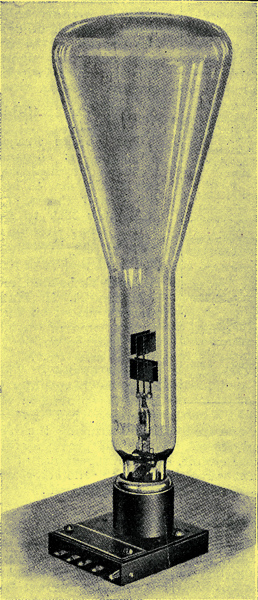|

Kathode Ray Oscillograph
A conversazione was held at the Institution of Civil Engineers on Thursday, July 12th. Whilst the majority of the interesting exhibits were relating to general engineering there were one or two which were of wireless interest.
One of these was a cathode ray oscillograph developed at the laboratories of the Western Electric Company.
The apparatus is a special form of Braun tube employing a hot cathode in the form of a thermionic filament. This instrument is of the same type as that employed recently by Messrs. E V Appleton and R Watson Watt in their investigations on atmospherics.
The chief advantage of the cathode ray oscillograph over other forms of oscillographs is its freedom from inertia and from free period which renders it effective at, for instance, radio frequencies, where other forms fail.
The tube is more convenient to operate on account of the simple nature of the accessory apparatus needed.
It allows of speedy observation of the characteristics of a variety of electrical apparatus and circuits. A demonstration was given of its use for seeing at a glance the characteristics of valves and its application in this connection makes it extremely valuable for laboratory testing.
The oscillograph illustrated in the accompanying picture consists of a glass three-electrode tube about 30 cm long, in the form of a cylinder about 4 cm diameter which spreads out into a conical form with a slightly rounded end. The diameter of the large end is about 10 cm.
The cathode consists of a filament coated with active oxides. The anode is a small platinum tube set about 1 mm from the filament, which is bent into the form of a nearly complete circle. Between the filament and the anode is a small circular screen with a hole in the centre just smaller than the circular filament.
A battery of 250 to 400 Volts is connected between the anode and the cathode. This battery raises the anode to a positive potential with respect to the filament, and the electrons, which are supplied by the hot filament, are accelerated by the electric field so produced. A small fraction of the electrons pass completely through the tubular anode and constitute the cathode rays.
The rays then pass between two pairs of deflecting plates set at right angles to each other, and fall upon the large end of the glass tube. The inside of the large end of the tube is covered with a fluorescent mixture which renders the rays visible, so that the form which they take appears much as a picture viewed on the focussing screen of a camera.
|